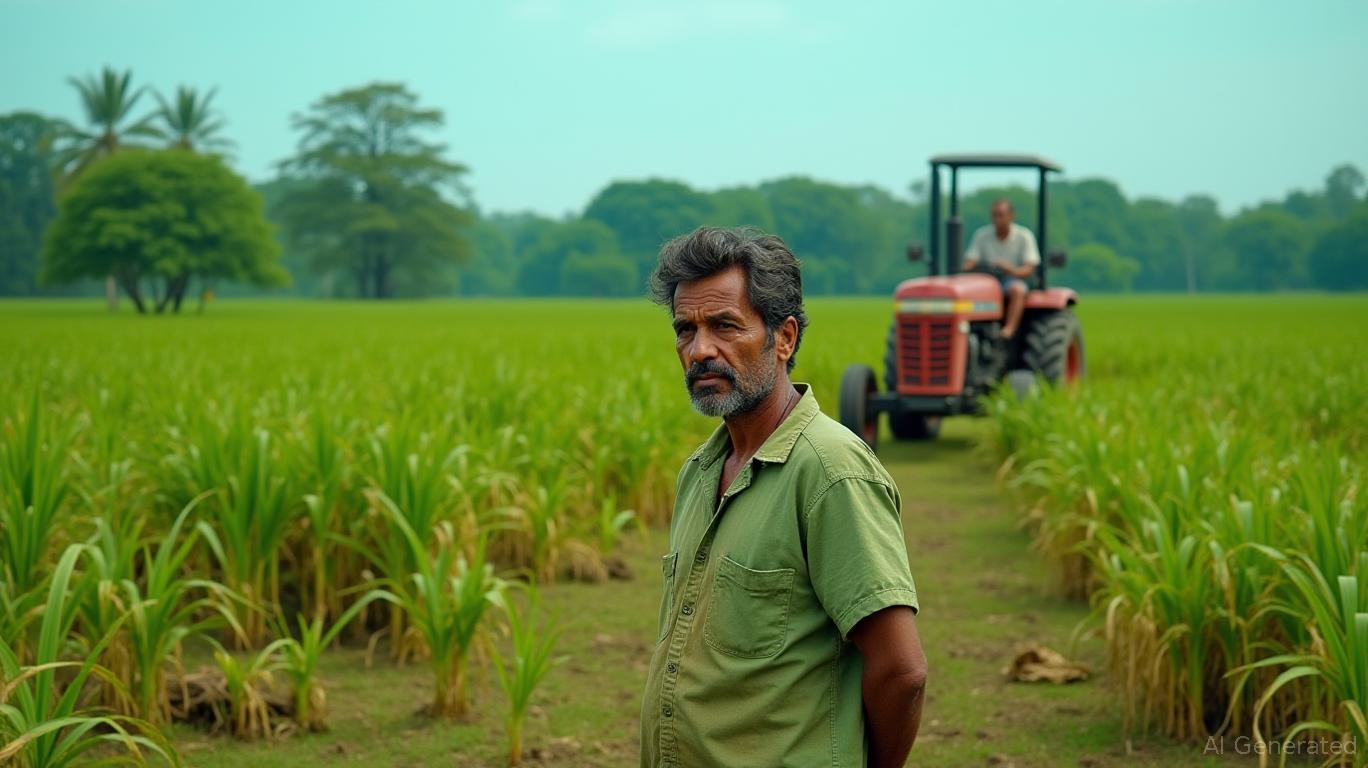Sugar's Bearish Crossroads: Speculators Shorten, but Fundamentals Hint at a Turn
Speculative traders have deepened their bearish bets on raw sugar, pushing net short positions to a record low, while coffee markets remain caught between cautious optimism and lingering pessimism. The latest Commitments of Traders (COT) data reveals a stark divergence between hedgers—positioned for scarcity—and speculators—focused on near-term pressures. This conflict sets the stage for a pivotal moment in both commodities, with prices poised to swing sharply if fundamentals align with commercial insights.
Ask Aime: "Predicted sugar price downturns amid coffee market uncertainty."
Raw Sugar: A Perfect Storm of Shorts and Shortsightedness?
The raw sugar market has become a battleground for speculative bears. As of early May 2025, managed money accounts held a net short position of -126,800 contracts, a 10,200-contract decline from the prior week. This marks the largest speculative bearishness in months, driven by a cocktail of factors:
- A strengthening U.S. dollar, which hit a 14-month high as Fed rate hike expectations resurged.
- Overhang from Brazil’s delayed sugarcane harvest, initially seen as a temporary oversupply.
Ask Aime: Could the record low net short positions in raw sugar be a warning for a sharp price swing?
Yet commercial hedgers—the producers and exporters directly exposed to physical markets—have doubled down on bullish bets. Their net long position surged to 123,500 contracts, with the gap between their longs and speculators’ shorts widening to 23,300 contracts. This spread, the largest in over a year, suggests hedgers anticipate a supply crunch.
The catalyst? Weather and logistics. Brazil’s erratic rainfall has slowed harvest progress, while port congestion threatens to delay exports. “A 1% reduction in Brazil’s 2025/26 sugar output could push prices up by over 10%,” warned one analyst, citing the 2023 crisis that saw prices spike 22% in six months after similar bottlenecks.
Coffee: Caution Amid Climate Crosscurrents
Coffee futures, though less extreme, mirror a similar tension. Speculators trimmed their net short position to -48,090 contracts, a 5,483-contract reduction, signaling reduced bearishness. Open interest rose to 174,735 contracts, hinting at volatility ahead.
Commercials, however, are hedging against supply risks. Net long positions climbed to 45,645 contracts, driven by concerns over climate shifts in Brazil and Vietnam. Persistent droughts and pest outbreaks have slashed yields, with analysts estimating a 5% drop in global production by mid-2025.
Why the Divergence Matters—and What It Means for Investors
The COT data underscores a recurring theme: speculators chase short-term macro trends, while hedgers bet on physical realities. History favors the latter. In 2023, sugar prices surged after hedgers’ long positions foreshadowed supply shocks. Today’s widening spreads suggest a similar reckoning could be near.
Three risks could trigger a reversal:
1. Brazil’s Sugar Crisis: A 1% shortfall in Brazil’s output (the world’s top producer) could lift prices by 8–12%, per CFTC volatility metrics.
2. Dollar Dynamics: A 2% decline in the U.S. dollar index—possible if Fed hikes stall—could add $0.03–0.05/lb to sugar prices.
3. Coffee’s Climate Tipping Point: A 1°C temperature rise in Brazil’s coffee belt could reduce yields by 15–20%, according to USDA stress models.
Conclusion: Positioning for the Turn
The COT data paints a clear path for investors: favor long positions in raw sugar, given the extreme speculative shorting and commercial confidence. The widening spread of 23,300 contracts represents a “bet against the market”—a contrarian opportunity if supply constraints materialize.
Coffee offers a more nuanced trade. While commercial optimism is growing, the modest spread and speculative short-covering suggest a range-bound market until clear supply signals emerge.
The critical watchpoints? Brazil’s harvest progress, dollar movements, and open interest trends. As the old commodity adage goes: “Speculators may rule the waves, but hedgers control the tides.”
In this case, the tides are turning bullish.

_b905d9341749265671656.jpg)



















